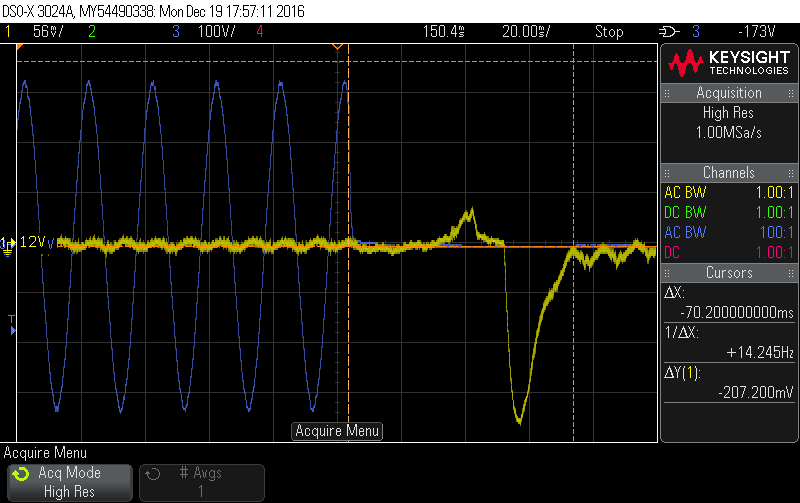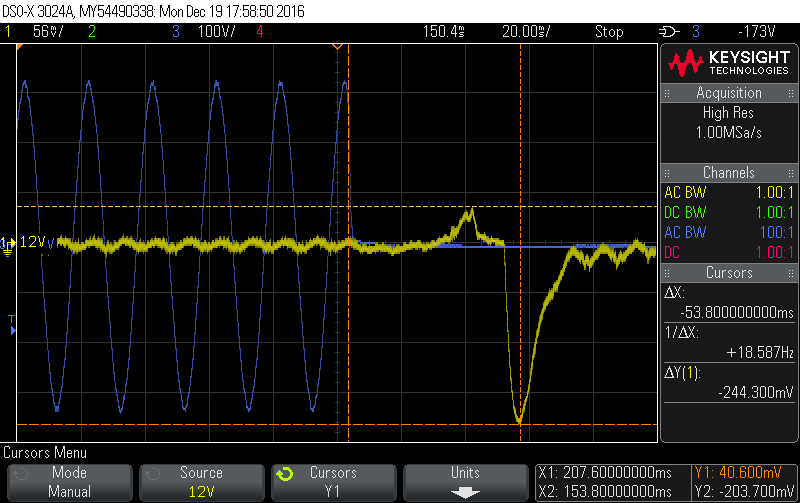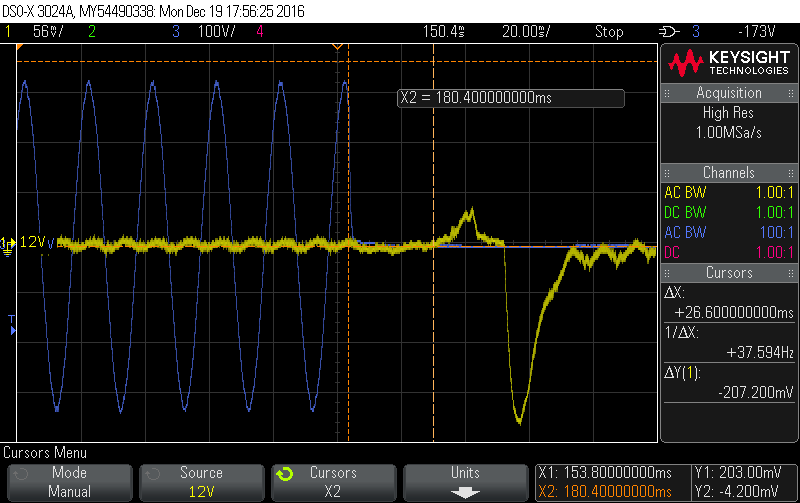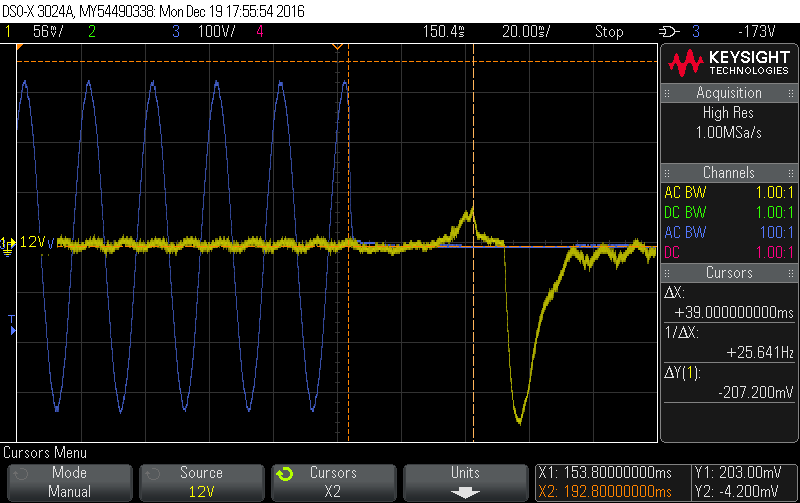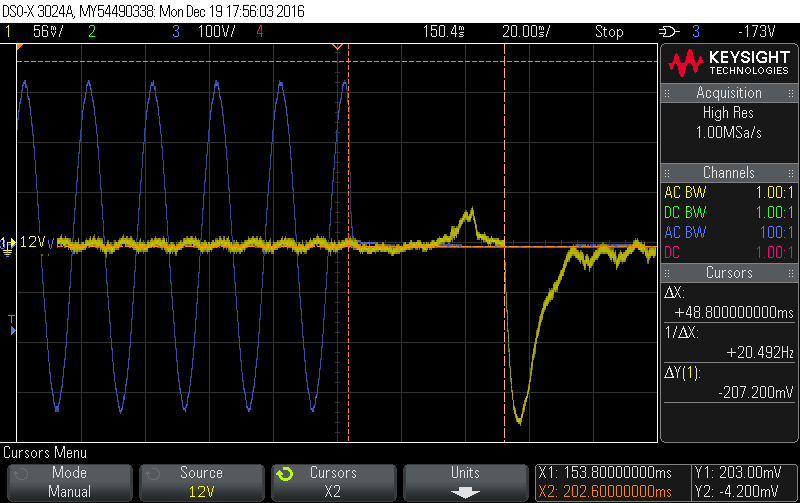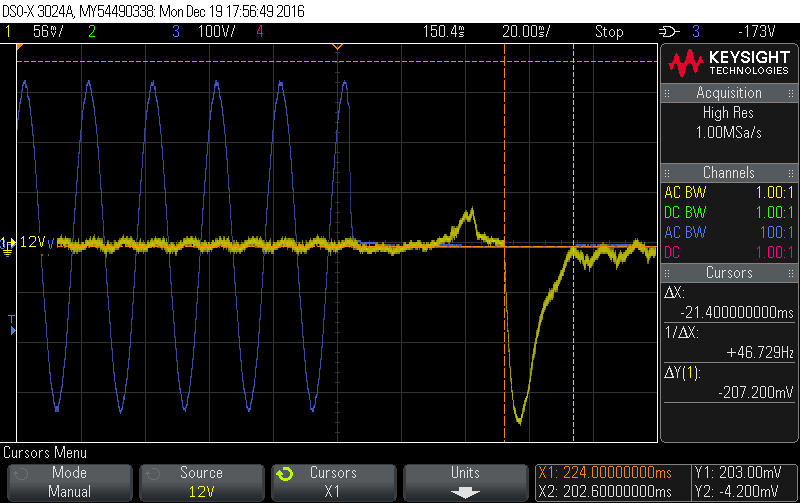FSP Twins 500W Redundant PSU Review
The FSP Twins series combines the usability of a normal ATX PSU and the advanced features of a redundant server unit. The Twins 500W we're evaluating today addresses users that need an ultra-reliable PSU and are willing to pay for it.
Why you can trust Tom's Hardware
Protection Features And Transition Time
Check out our PSUs 101 article to learn more about PSU protection features.
Our protection features evaluation methodology is described in detail here.
| Protection Features | |
|---|---|
| OCP | 12V1/2/3: >41A 5V: 28A (140%) 3.3V: 28.7A (143.5%) 5VSB: 10A (303.3%), 4.655V |
| OPP | 608.094W (121.6%) |
| OTP | ✓ (105°C @ Secondary Side) |
| SCP | 12V: ✓ 5V: ✓ 3.3V: ✓ 5VSB: ✓ -12V: ✓ |
| PWR_OK | Operates properly |
| NLO | ✓ |
| SIP | Surge: MOV Inrush: NTC Thermistor & Bypass Relay |
The over-power protection feature is set at a normal level, while OCP is quite high on all rails (especially at 5VSB where it should be set much lower). This is the first time we've seen a 10A 5VSB rail.
Although FSP doesn't mention it, OTP is present and properly configured. This protection is essential, especially in server-oriented PSUs with high power density. Moreover, there is fan failure protection, which we confirmed works correctly. In case the fan breaks or is simply removed, the PSU shuts down.
As expected, there is short-circuit protection on all rails, and the power-good signal is accurate, since it drops before the rails go out of spec.
Since this unit consists of two power modules, one of which fully takes over in case the other breaks down, we had to run some tests to check the transition time and how smooth this transition actually is on the critical +12V output. This proved to be a tricky task. However, our scope has an advanced set of trigger options that we fully utilized. For the following tests, we applied full load (500W) to the PSU.
This is the moment that we cut power to the first module. As you can see in the screenshot, the total time between dropping power and the second module stabilizing the +12V rail is 70.2ms. In order to achieve a smoother transition, FSP used large bulk caps. In this case, the long hold-up time serves up a tremendous advantage.
Get Tom's Hardware's best news and in-depth reviews, straight to your inbox.
The peak voltage overshoot is 40.6mV, while the voltage drop reaches 203.7mV. This means that the +12V rail stays within spec during the transition period.
We notice the first effect on the +12V rail's output 26.6ms after removing power from the first module. This is very close to the power module's hold-up time, and we believe this is the moment that the second module kicks in.
The peak of the voltage overshoot happens 39ms after we remove power from the first module.
The voltage drop starts 48.8ms after the power cut. Naturally, the second power module needs some time to adjust its operation to the transient load.
The peak of the voltage drop is 53.8ms after removing power to one of the modules.
The transient recovery time is 21.4ms. This is normal, and as you can see from the scope screenshot above, ripple at +12V slightly increases afterwards because the module has to deliver 500W on its own now instead of roughly half that amount.
Current page: Protection Features And Transition Time
Prev Page Efficiency, Temperature, And Noise Next Page Cross-Load Tests And Infrared Images
Aris Mpitziopoulos is a contributing editor at Tom's Hardware, covering PSUs.
-
shrapnel_indie ReplyPros
Full power at 45°CAll cables are fixed, and because this is a server-like product, its maximum operating temperature for continuous full power delivery is 50°C.
Please explain to me why these numbers don't seem to match up properly. (THB, I may have missed it.)
-
dstarr3 I really wonder what a consumer could possibly want this for. What is an ordinary consumer doing that they absolutely cannot risk any downtime whatsoever on their rig?Reply -
nzalog I know freenas can be configured to work faster if you can for sure trust the system from not having RAM errors (covered by ECC) and if you can guarantee there is no unexpected shutdown (covered by dual power and ups). However the reliable power is not really required because a SSD as an SLOG device will cover for it, but then the SSD becomes the bottleneck for writes.Reply -
firefoxx04 I build several file servers a month for clients. Low end enough to where pre built solutions are not an option. This power supply would be a good fit but it is useless, imo, without some sort of email alert option. Maybe I missed that?Reply
When I deploy file servers for clients, I always setup some sort of alert system for raid failures so I can fix the problem. What is the point of redundancy if the user has no idea a problem has occurred? Yes i know that this PSU makes a "loud buzzer noise" but I cant have that either. The user needs to continue to use the system and they cannot if it is screaming 100% of the time.
Send me an email alert. Its easy to implement. -
Rookie_MIB One thing I'm curious about - what if one unit does fail? Are they bog-standard replacement parts where you can go and buy a similar hot swap redundant power supply or is the system proprietary. If it's the latter, then I don't see many people lining up for this one...Reply -
apache_lives A PSU is but one part of a "reliable" machine, to me this will not increase up time or do anything of any value, seems more like a "makes me feel better" part.Reply -
Aris_Mp about the first comment, the PSU is certified for up to 50C ambient full power delivery, but I choose to test up to 45C every PSU that passed from my test bench (since I also have to evaluate 40C rated units and I need to keep the same conditions for all).Reply -
shrapnel_indie Reply19144735 said:about the first comment, the PSU is certified for up to 50C ambient full power delivery, but I choose to test up to 45C every PSU that passed from my test bench (since I also have to evaluate 40C rated units and I need to keep the same conditions for all).
While I'm glad for that, It's also nice to know if a unit rated at 50°C operation will deliver on its "promise" though. (If you exceed the "promised" rating, like the 40°C rated units @ 45, well, it delivered on its promise and then some.)
-
Pompompaihn Newegg has several server chassis for sale that come WITH redundant 500w+ PSUs for less money than just this power supply. Given that the market is low end commercial/prosumer, and it's not going to be for gaming or HTPC, why wouldn't you just buy the whole thing for cheaper?Reply
